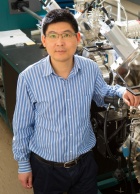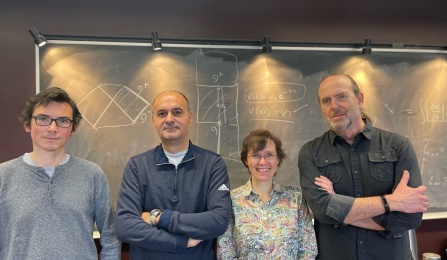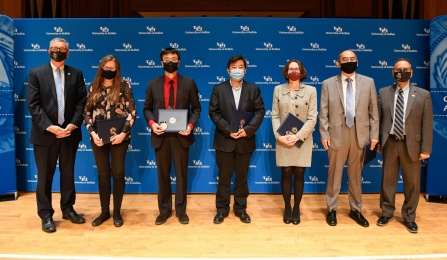
Faculty Awards

Professor Igor Žutić received in 2021 a grant from U.S. Office of Naval Research, Developing Novel Two-Dimensional Platforms in Superconducting Heterostructures for Fault-Tolerant Quantum Computing. The focus of this research is on realizing elusive Majorana states. Instead of a conventional picture of an indivisible block, an electron can be represented as two spatially-separated halves. The two halves are realized as a pair of Majorana states which transform electron such that its properties become protected from the local perturbations of its surroundings. Such Majorana states offer an attractive platform to implement topological fault-tolerant quantum computing. Žutić has also received a grant from National Science Foundation, Superconducting and Spintronics Devices for Low-Power and High-Speed Operation and Brain-Inspired Computing. This research proposes paths to integrate superconducting and magnetic materials for a wide range of emerging applications and takes advantage of spin-orbit coupling, inherent to many junctions, that is externally tunable.

Professor Hao Zeng received a collaborative grant from US National Science Foundation. The other co-PIs of this grant are Prof. Jung-Hun Seo from the Department of Materials Design and Innovation at UB and Prof. Shengbai Zhang from the Physics Department at Rensselaer Polytechnic institute. Present LEDs suffer from low energy efficiency in the green spectrum range, a challenge known as the “green gap”. This proposed project will investigate the feasibility of using strontium hafnium sulfide as the active light emitter to address the “green gap”. This grant started in May 2021, and supports Professor Zeng and collaborators to continue their explorations of an emerging class of semiconductor materials called chalcogenide perovskites, a new research direction the group spearheaded.
Professors Sal Rappoccio, Avto Kharchilava and Ia Iashvili (from left to right) received a grant from the National Science Foundation (NSF) for High Energy Physics research with the Compact Muon Solenoid (CMS) detector at the CERN Large Hadron Collider (LHC). The grant support allows UB High Energy Physics Experimental group to carry out precision measurements of the standard model processes, conduct searches for new particles predicted by theories beyond the standard model, refine methods for jet substructure algorithms to reconstruct high-momentum objects, extend capabilities of the CMS detector to increase its coverage and tolerance to high collision rates, and develop advanced methods to better utilize the CMS data, including those from the planned upgrade of the LHC (High Luminosity LHC). More information can be found in the NSF announcement.

Professors Ciaran Williams, Dejan Stojkovic, Doreen Wackeroth, and Will Kinney, (from left to right) received a grant from the National Science Foundation to conduct a wide-ranging research program which aims to provide answers to key open questions at the frontier of particle physics, cosmology, and gravity research. Research topics to be investigated span a large range, including the physics of cosmological inflation, the physics of black holes, the physics of Dark Energy (which is believed responsible for driving accelerated cosmological expansion), the properties of the Higgs boson, and studies of the theory that underlies the strong and electroweak interaction and their effects at the CERN Large Hadron Collider and at future accelerators. More information can be found in the NSF announcement.

Professor Andrea Markelz (third from the right) received the 2021 SUNY Chancellor’s Award for Excellence in Scholarship and Creative Activities. This award recognizes the work of those who engage actively in scholarly and creative pursuits beyond their teaching responsibilities. Professor Markelz has conducted trailblazing research on electronic systems and proteins’ structural dynamics, which refers to the way proteins vibrate, enabling them to carry out important biological functions. A highly respected experimentalist, she has about 100 publications resulting in over 3,300 citations. She is a leading researcher in terahertz spectroscopy studies of biomaterials and condensed matter materials. Her team developed accessible techniques that use near-field terahertz microscopy to measure vibrations in proteins and other large macromolecules with terahertz light generated and detected by ultrafast lasers. Previously, such vibrations could only be measured using methods that required extremely dry and cold environments and expensive facilities. This discovery is a significant breakthrough for the field, with a wide array of applications.
